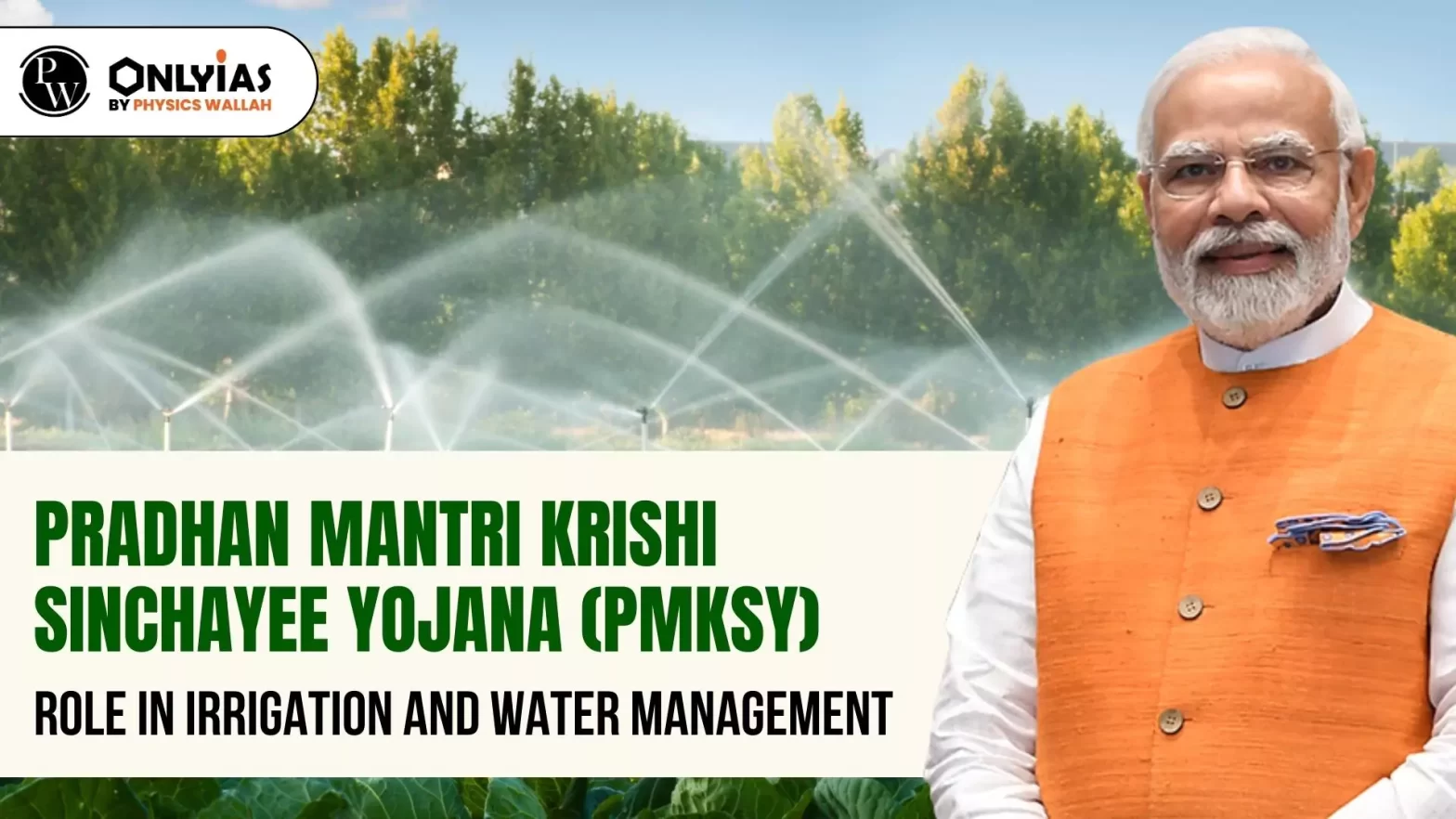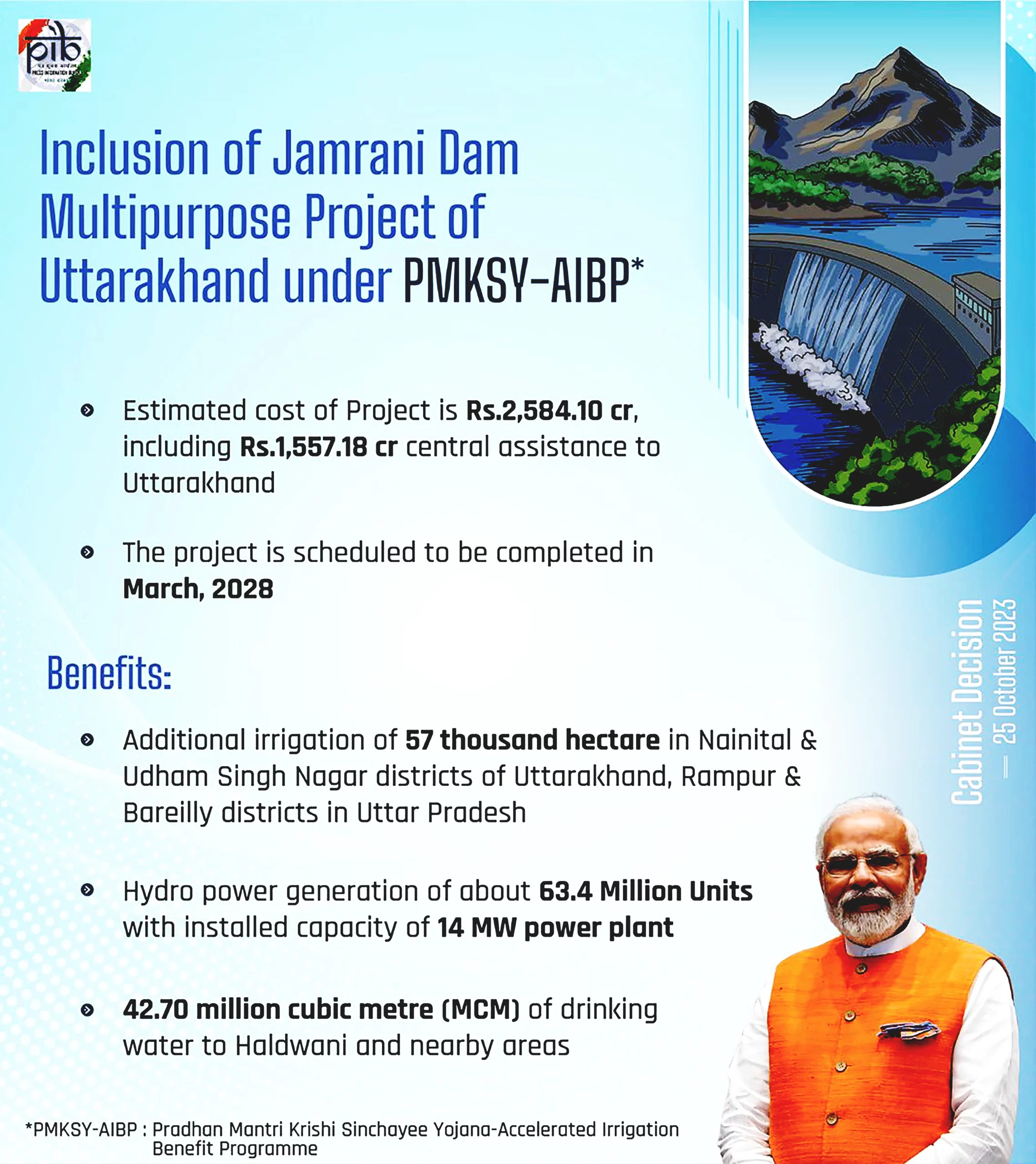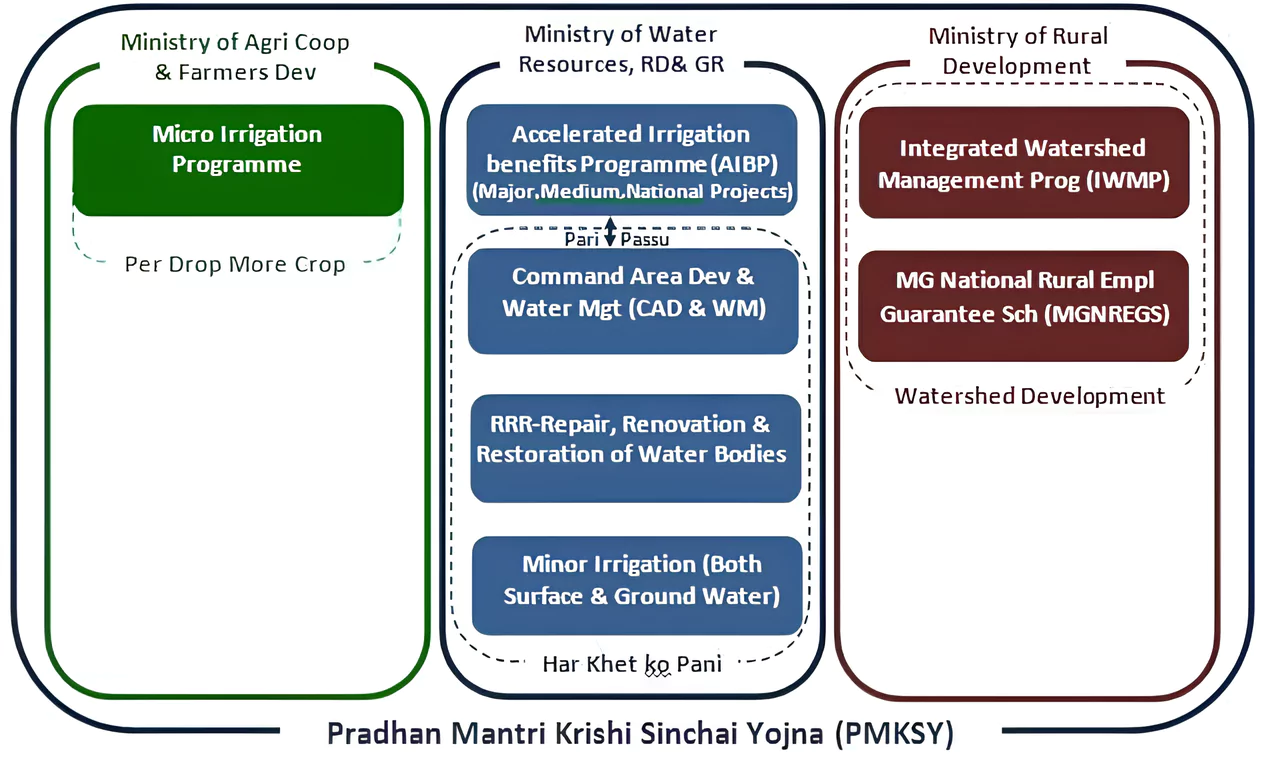![]() PWOnlyIAS
PWOnlyIAS
![]() October 27, 2023 04:12
October 27, 2023 04:12
![]() 2514
2514
![]() 0
0
Context: Recently, the Cabinet Committee on Economic Affairs approved the inclusion of Jamrani Dam Multipurpose Project of Uttarakhand under Pradhan Mantri Krishi Sinchayee Yojana-Accelerated Irrigation Benefit Programme (PMKSY-AIBP).

Jamrani Dam Project: Overview, Benefits, and Cost

Dams in India: Scale, Age, and Safety Concern
PMKSY-AIBP: Enhancing Agricultural Water Access and Efficiency

<div class="new-fform">
</div>

Latest Comments